
Illustrations by Little Friends of Printmaking. Book cover image by Canaletto, “The Basin of San Marco on Ascension Day” (1740). Mariano Garcia/Alamy Stock Photo. Cover design: Caroline McDonnell
As an undergraduate with wanderlust in the early ’70s, Dennis Romano (’73) was all set to spend a semester in France studying medieval history — until the program was canceled due to lack of interest. On a walk across campus, Romano noticed a little poster that said Wake Forest had recently acquired a house in Venice and was looking for students to go.
The rest is history.
Romano spent the spring of 1972 at Casa Artom and went on to specialize professionally in the history of medieval and Renaissance Europe and the Mediterranean. He earned a doctorate at Michigan State University, hopscotched around prestigious universities while continuing his research and writing several books about Venetian history, and finally became a professor at Syracuse University. His many awards include a Guggenheim Fellowship and an Ailsa Mellon Bruce Senior Fellowship at the Center for Advanced Study in the Visual Arts at the National Gallery of Art in Washington, D.C.
Romano retired in 2016 as Syracuse’s Dr. Walter Montgomery and Marian Gruber Professor of History Emeritus, but he continued his research and writing, spending the next seven years pouring a lifetime of knowledge into the expansive and engaging “Venice: The Remarkable History of the Lagoon City,” published in January by Oxford University Press. It has received glowing reviews in many national and international publications, including “The Economist” and “The Washington Post,” which called it “brilliant.”
Managing Editor Kelly Greene (’91) caught up with Romano to discuss his latest work just before he joined a Smithsonian Journeys cruise from Malta to Nice, France, as an on-board expert. After that, he was planning to return to Venice to continue his research. Here are excerpts from their conversation, edited for length and clarity.
Kelly Greene: Let’s start at the very beginning. How did you get interested in medieval history, and going to Venice, as an undergraduate?
Dennis Romano: I grew up in the northern Virginia suburbs, and I had a fabulous high school history teacher my junior year. He made me realize that history was interpretation. It’s not facts, dates — it’s analysis.
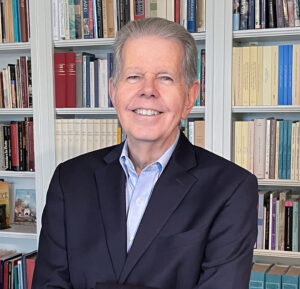
Photo by Bob Korn
It’s a testament to the power of teachers that he really made me think I wanted to do history. Medieval — I have no idea why. I was just interested in that time period. And my French teacher, my last year in high school, was extraordinary as well. So, I wanted to do medieval history, and because I was doing French, I wanted to go to France. Wake Forest had a program, but they didn’t have enough people signed up. And I literally was walking across the campus and saw a mimeographed sheet saying we’d got this house in Venice, and we’re looking for people to go. And I thought, “I don’t quite know where Venice is, but I want to go somewhere.”
KG: So, studying in Venice was an accident?
DR: It was unbelievable serendipity. What if they’d had enough people to go on the French program? I would presumably be doing French medieval history. But then when I got to Venice, I realized that medieval Italian history is urban history, and cities are really interesting places. I was hooked.
I went with (Professor) Andy and Grace Andronica (P ’89, ’92). We were their second semester of the first year. So, there had been a group in the fall of ’71, and we were the spring of ’72. It must have been incredibly difficult for them because they didn’t know any of the students. They had to take people who were willing to do it. This motley crew just shows up. It was all sort of fly-by-night — there was no furniture downstairs. There was no library, no TV, no piano. We weren’t allowed to cook because Andy and Grace had two little kids, and they rightly needed the kitchen. We ate at a restaurant up the street where our food had been paid for four nights a week.
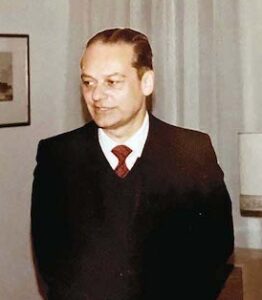
Professor Terisio Pignatti. Photo courtesy of Tom Hayes (’79)
What I really remember were the site visits with Dr. Pignatti (world-renowned scholar and professor Terisio Pignatti (D.F.A. ’76). When you went somewhere with him, to a museum or to a site, it really came alive. We had to do a project for him, and I was working on Carpaccio (a Renaissance painter). (Pignatti) had written a book on him that had been translated into French, and I could read French, so he told me to go to the Museo Correr (Venice’s city museum), which he was the head of at the time, and look at it there. I couldn’t speak any Italian, and these ushers at the Correr were just looking at me trying to explain why I’m there. Finally, I said “Pignatti,” and they started rushing around to get me what I needed.
KG: Was there a moment that semester when you thought, “I must come back?”
DR: I loved being there, and it was such a wonderful semester that I think the minute I got back, I thought, “I want to keep going back to Venice.” It was so eye-opening in every way. The first time you ever see the fire station, with the fire boats or an ambulance racing down the Grand Canal. Everything is in a boat. The vegetable markets, the gondola weddings, which are very pretty, and the dogs! They’re up in the prow, always with their noses smelling as they go down the canal. It’s just unbelievable.
If I could change anything in America, I would say that every 18- to 20-year-old would have to live overseas for a year, because it changes your view of the world.
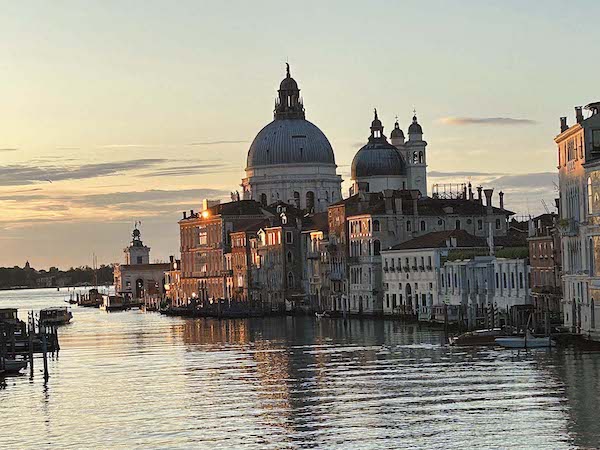
Casa Artom at dawn. Photo courtesy of Natalie Harvey ('94)
KG: Before you wrote this amazing 775-page history of Venice, you must have learned Italian?
DR: First, I had to learn Latin, because up until about 1450 everything was in Latin. When I first went to Venice for my Ph.D. research, because I was reading in Latin all day, I wasn’t really learning that much Italian at the time, unlike some of my friends who were working in later time periods where the sources themselves were also in Italian. So, my Italian’s good, but I don’t speak it beautifully, which is embarrassing.
KG: I’m glad you mentioned “up until 1450.” You researched such a vast expanse of time. How did you go about tackling so many eras?

DR: Well, I have a good library in my condo in Washington, D.C., of Venetian history books, and I said to myself, often, “My job is to condense all these shelves of books into one book.” I would read, in preparation for writing a chapter, and I wrote the book chronologically. I started in the beginning and worked through to the end, and I’d read and read and read and take notes and notes and notes, and along the way I’d find really good examples. This is a Venetian sort of approach. I would almost see it like I was putting together a mosaic. OK, this little piece of glass will go here, and this little piece will go here. And it’s finding the pattern that, OK, I’ve got all this data, the information, how am I going to give it form? What’s the bigger picture?
KG: In a recent interview you described how you wanted to include not only the impact and influence of the nobility and the merchant class but also the servants — and how you learned more about them by reading thousands of primary records, such as their wills and testaments.
DR: I really did want to include the lower classes. I mean, my favorite people in the Wake Forest Venice program were the housekeepers, Luciana and Marisa, and they were as important to the program as anything. Luciana mothered generations of kids coming through there, showing them how to cook. From my first book, I was always interested in the non-elites. Of course, I then went on and wrote a book about a doge (the head of state in the Republic of Venice), so I went the other direction, too. But even today, the people who clean the hotel rooms and cook the meals at restaurants are crucial to the functioning of the city. So, I thought it was important to give them as much of a voice as I could, and I tried to use a lot of quotes from primary sources so they could speak for themselves and not always be speaking through me.
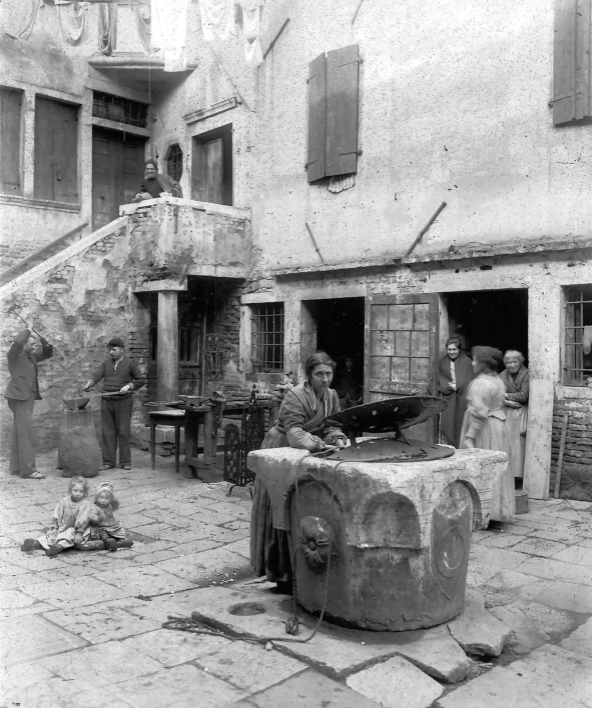
Peasants in mid- to late-19th century Venice. Carlo Naya, "Corte dell’Olio in San Martino."
KG: Do you have any favorite characters in your book?
DR: I do. One of the chapters opens with a guy who had been an enslaved person. He was from Croatia. But he is freed by his master, and then within two or three generations, the family’s incredibly successful. So that was an interesting story to think about. I had a little insight from the owner’s will because he left a gold ring to this enslaved person, which suggests there was some sort of emotional tie between them. And that may have been what helped this guy, ultimately. Eventually, the family got into the nobility. So that was an interesting one. And in the chapter on the 19th century, I describe this incredibly poor woman — the health people come by, and she’s living in what they said was a damp, stinking cubby hole. It’s important to bring those people in so we don’t get completely mesmerized by the beauty of the place and forget that a lot of people suffered.
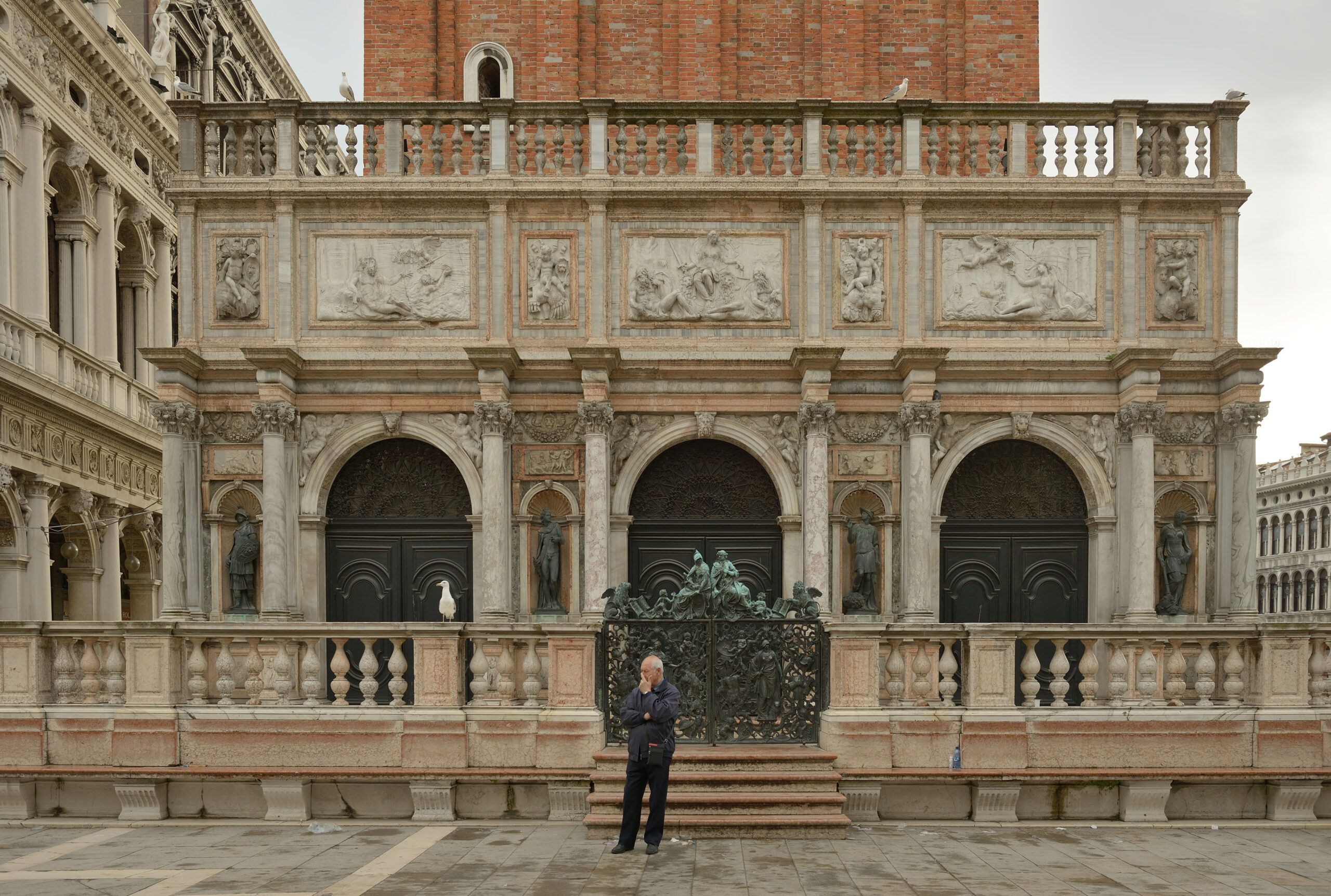
The Loggetta on Piazza San Marco, created by Florentine scultor and architect Jacopo Sansovino from 1538-45. Photo by Wolfgang Moroder, distributed under a CC-BY 3.0 license via Wikimedia Commons.
KG: Most people think of art history in connection with Venice, but you often describe its history through an economic lens.
DR: Absolutely. Venice has been built, literally, on salt and pepper. Salt was the first source of Venetian wealth. They basically blackmailed cities on the mainland. They said, “If you don’t do what we want, we’ll embargo your salt,” and (the mainland farmers) needed salt both for humans, but also for their herds. And then pepper becomes the real source of wealth. It’s so interesting, because the things we now take incredible pleasure in viewing in Venice are the beautiful art and architecture. But when you look at the cost of those things, art was a minor expense in that time period. Now, of course, the value of that art is extraordinary.
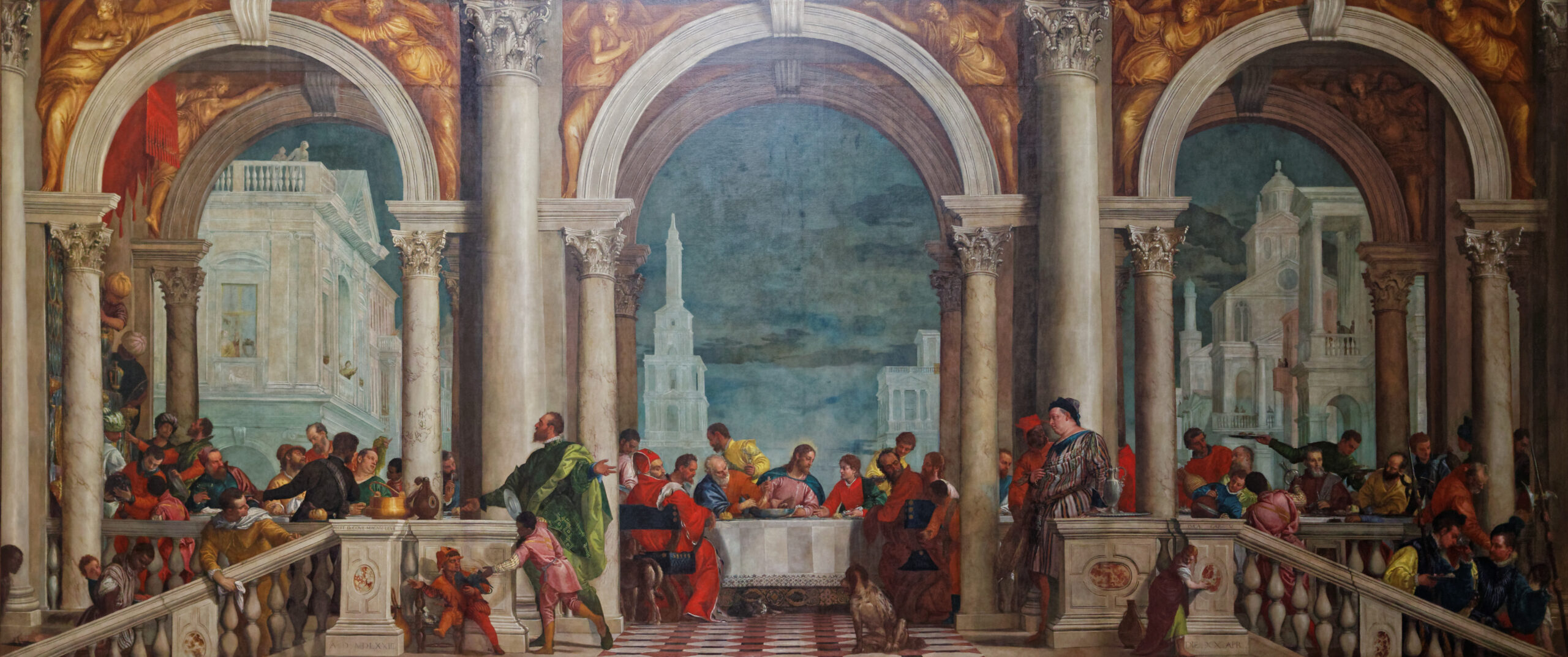
Paolo Veronese's "Feast in the House of Levi." Photograph by Oakenchips, distributed via Wikimedia Commons.
KG: Had you always planned to write this book, or some version of it, after you retired?
DR: I knew I wanted to eventually write this and that I couldn’t do it while I was teaching. It was just too big. With my other books, I could write a little bit during the semester, and then I’d write a chapter a summer. But this was too gargantuan. With 20 chapters, it would have been 20 summers.
For me, the most interesting chapters were the 19th, 20th and 21st centuries, because that’s not the period I knew. One of the big tasks that I set for myself in this book was to not write the history of Venice as the rise and fall of the republic, ending in 1797 when Napoleon conquers the city. A lot of histories of Venice get to that point, and then they have maybe a chapter or two, kind of as an afterthought, about the later period. I really wanted to bring in the 19th and 20th centuries.
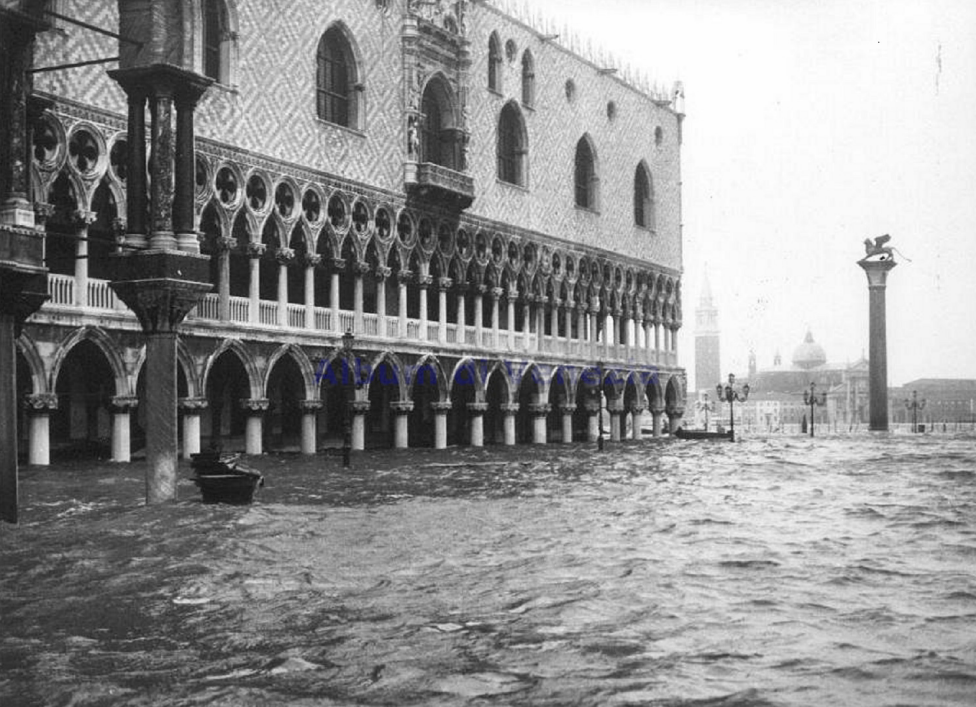
November 1966 flood in Piazza San Marco. Photo courtesy of Wikimedia Commons
KG: The broad assumption is that Venice is sinking, that it’s tragic, but what can you do, right?
DR: It’s complicated. There are two big issues. One of course is mass tourism, and how do you cope with that? There are so few Venetians left, the city’s population is under 50,000 now. But as a historian, I take the long view, and we are in the age of mass tourism. A hundred years from now, it’s going to be another age. There will be the next thing, whatever it is, and we’ll look back and go, “Oh, that was the age of tourism.”
The other big problem is the environmental issue of rising sea water. They’re even talking now about building dikes around Venice, making an island within an island, kind of like New Orleans, where you literally have to pump water out. If the sea water keeps rising enough, it’s going to go over the gates they built. It’s also going to go over the barrier islands. To save Venice, at some point they may literally have to surround it with a dike. It’s not a 21st-century problem, but one could see it as a 22nd-century problem. People have always been worried about the integrity of the barrier islands. They had laws about not cutting trees on them as long ago as 1320.
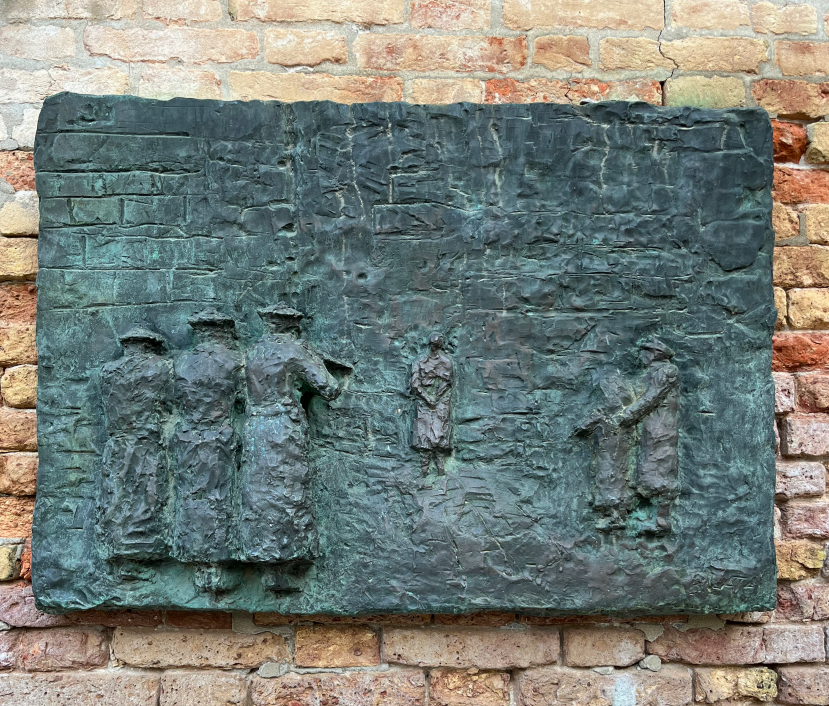
Monument commemorating Venetian Jewish victims of the Holocaust in Venice's Campo del Ghetto Nuovo. Photo by Dennis Romano
KG: Let’s move into a speed round: Have you ever paddled a gondola?
DR: I tried once, and it was disastrous. The pole is not locked into anything.
KG: Do you have a Carnevale mask?
DR: I had a Carnevale party in 1979, and I went as a box of documents from the archives. In 1989 when I was there, I went as the Grand Canal at low tide — I wrapped myself in black plastic with orange peels and trash stuck all over me.

KG: What’s your favorite Venetian recipe?
DR: Bigoli in salsa. It’s just onions and anchovies, and you cook it down in olive oil and serve it over bigoli, which is sort of a cross between our regular pasta and a whole wheat pasta. I also love squid in ink, but I’ve never cooked it.
KG: What are your secret recommendations for where to go and what to do?
DR: I’m pretty stingy with my hotel and restaurant recommendations. I’m having trouble now getting into a restaurant I want to go to, and you never know what people’s budget is. But I always recommend going on a trip out to Torcello (one of the barrier islands), because you see what early Venice was like. And I think a trip to the ghetto (the area where Jews were forced to live starting in the 1500s) is worth it. They give really good tours.
The Church of San Zaccaria is interesting, too, because you can go down in the crypt. It’s partially under water all the time, but there are early medieval doges who were buried there. Then you’ve got this beautiful Gothic chapel. And then you’ve got the Renaissance church. You don’t usually get in Venice what you get in Rome, which is layer upon layer upon layer of history, because of the environment. That’s one place in Venice where you can really get a sense of the early medieval, medieval and Renaissance, all in one building.
KG: Dennis, thank you so much. I look forward to digging deeper into your book. Safe travels.


